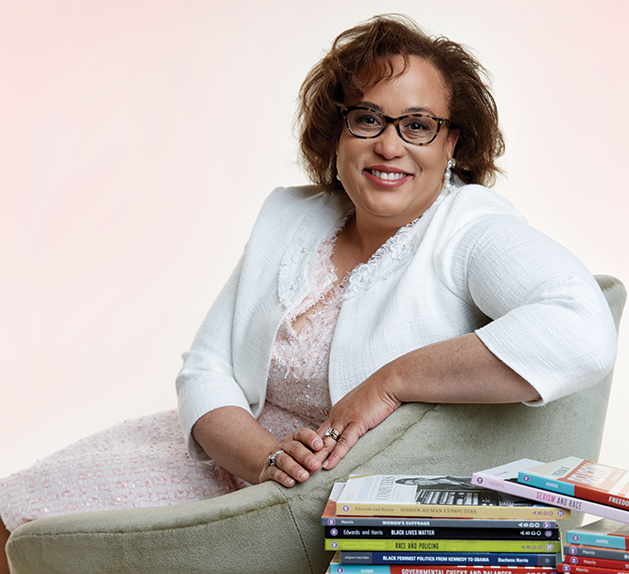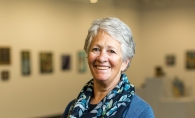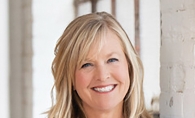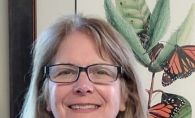
Duchess Harris, J.D., Ph.D. was named for her grandmother. The Vadnais Heights resident, author and American studies department chair at Macalester College was born in 1969, just two years after her grandmother Miriam Mann passed away, and “the year we went to the moon,” she says. (Harris’ full name is Miriam Duchess Harris.)
The trip to the moon would have held a special significance for Mann as she was one of the first 11 black women to work at NASA. Although Mann didn’t get to see the giant leap for mankind when Neil Armstrong first walked on the moon, her spirit lives on in her granddaughter Harris who honors Mann’s legacy though her activism, her commitment to knowledge and now in her book Hidden Human Computers: The Black Women of NASA. Stories about her grandmother were woven into the fabric of Harris’ childhood like colorful threads in a loom, but it wasn’t until she was an adult that Harris realized the important role her grandmother played in history.
The year was 1943 and many men were being drafted to fight in World War II. As these men were recruited as soldiers, women were then called upon to fill the gaps created in their absence. It was during this time that Mann—who held a degree from Talladega College with a major in chemistry and a minor in mathematics—and a group of 10 other women became the first black women recruited to work at NASA. These women worked essentially as computers, checking the work of the male engineers. Although it might be hard to imagine the significance of this today, at the time these women were taking their own giant leap for mankind, standing up against segregation and racism with courage and wits. To put it into perspective, Mann was born only about 60 years after slavery was abolished in the U.S. Harris talks of her grandmother with a clear admiration, noting her trailblazing spirit in both the workplace and at home. “My grandmother was born in 1907, and she was raising children in the 1940s,” she says. “At that time many women stayed at home. My grandmother was the first woman in the neighborhood to make a box cake,” she says.
The story of the 11 black women pioneers at NASA first entered popular culture with the movie “Hidden Figures”—over 60 years after the fact. “Black women started working at NASA in the 1940s, but the story wasn’t told until 2016,” says Harris. Harris had felt compelled to tell the story since college, but “it wasn’t until I became an academic that I had the skills to execute it,” she says.
Unlike the movie “Hidden Figures,” which was written with adults in mind, Harris wrote Hidden Human Computers: The Black Women of NASA to be used in the classroom, specifically at an eighth grade level. A class Harris taught where almost no one held any knowledge about the first black women to work at NASA was Harris’ inspiration to write the book for the classroom. “I want kids to get this information before going to college,” Harris says. In 2013, Harris earned a yearlong sabbatical from teaching and began her research. “I won a grant from the State of Virginia and several grants from Macalester College, so I could actually travel to NASA Langley and see the archives,” she says. The archives proved to be filled with important information including a document stating that NASA Langley was built on a plantation and legally remained a plantation until 1950. “I think it’s important for people to know that,” says Harris, noting that for the first seven years her grandmother worked at NASA, the site was still formally a plantation.
If you’ve seen the movie “Hidden Figures,” you probably remember the climactic moment when Kevin Costner’s character Al Harrison removes the colored sign on the bathroom, announcing, “we all pee the same color” (And if you haven’t seen the movie, this writer recommends you do). Harris thinks it’s important for people to know that it was actually her grandmother, Mann, who removed the colored sign. Although Harris grew up with many stories of her grandmother, “my personal favorite is her removing the ‘colored’ sign,” she says.
Harris feels a strong connection to her grandmother that goes beyond their shared name. “I think my life reflects her in that she had an academic career, she was married and had three children—all of that is true for me as well,” says Harris. When asked what has changed for black women since her grandmother’s lifetime, Harris pauses for a few seconds to contemplate. “Black women are still less represented in STEM [science, technology, engineering and math],” she says. “What is different is there’s now a concerted effort to change that.” And Harris hopes to have a hand in furthering this change with her commitment to inspire future generations with the story of her grandmother.
Hidden Human Computers: The Black Women of NASA can be found at Common Good Books. To learn more about Harris or watch some of her fascinating talks visit duchessharris.com









